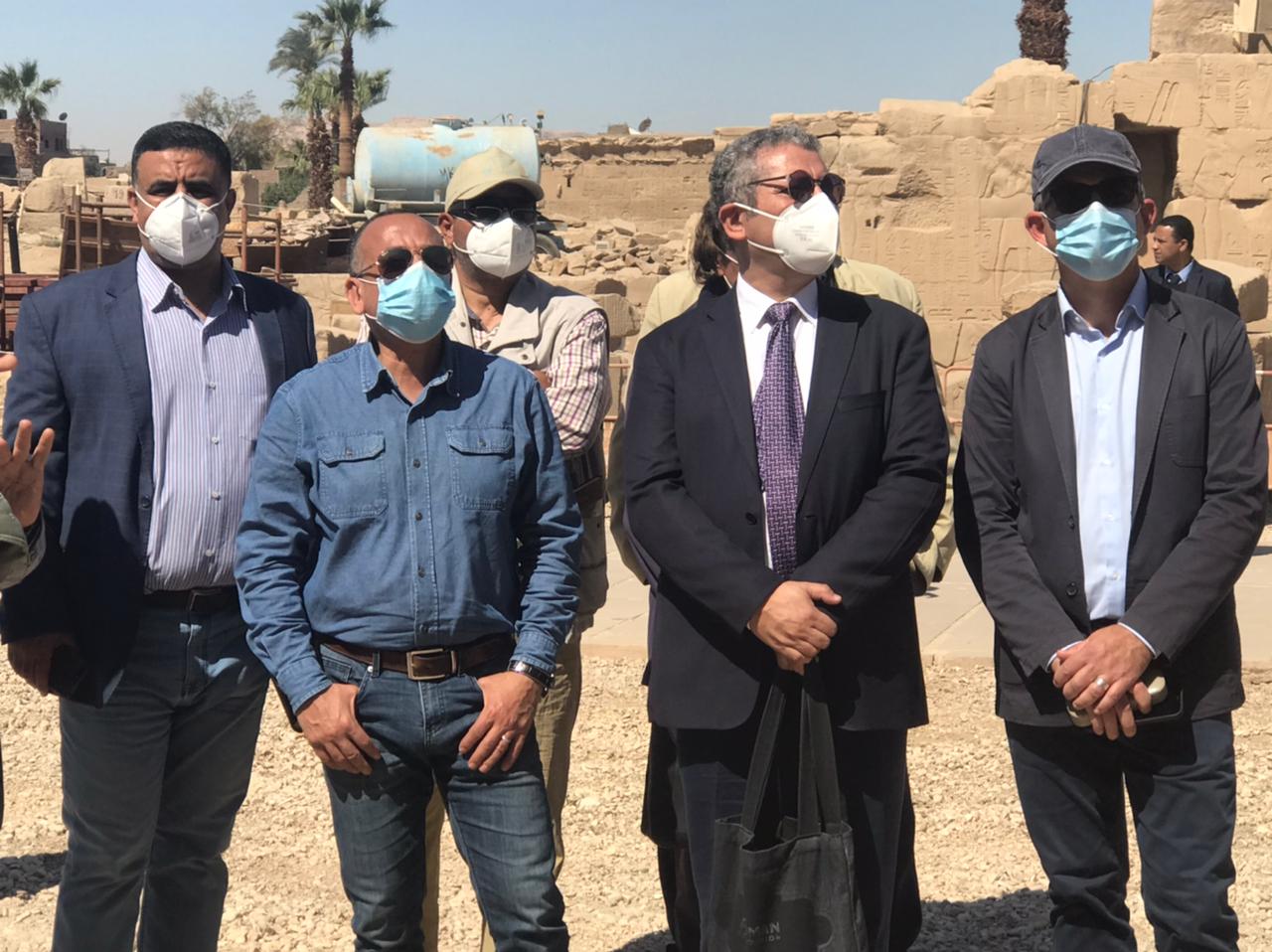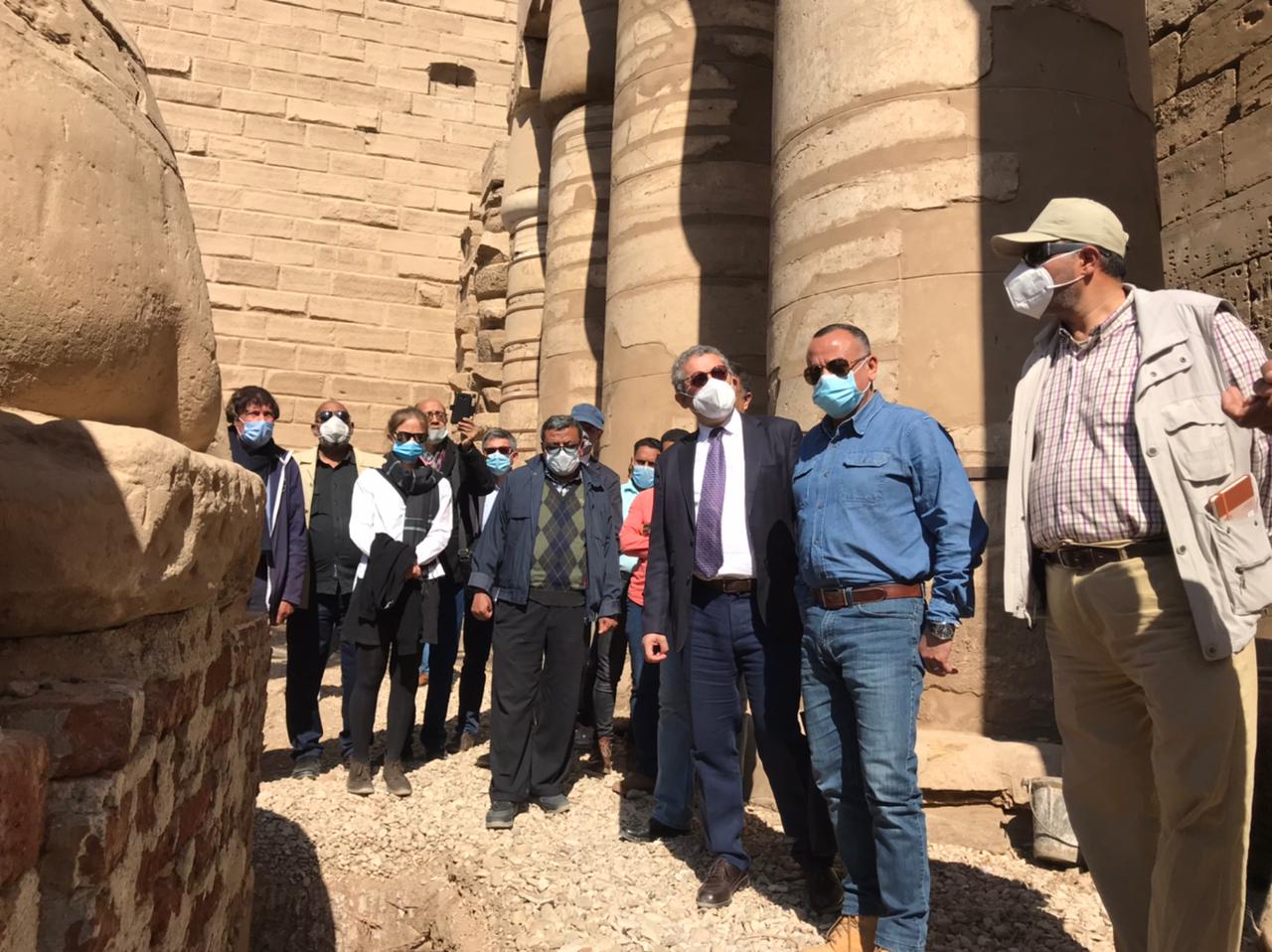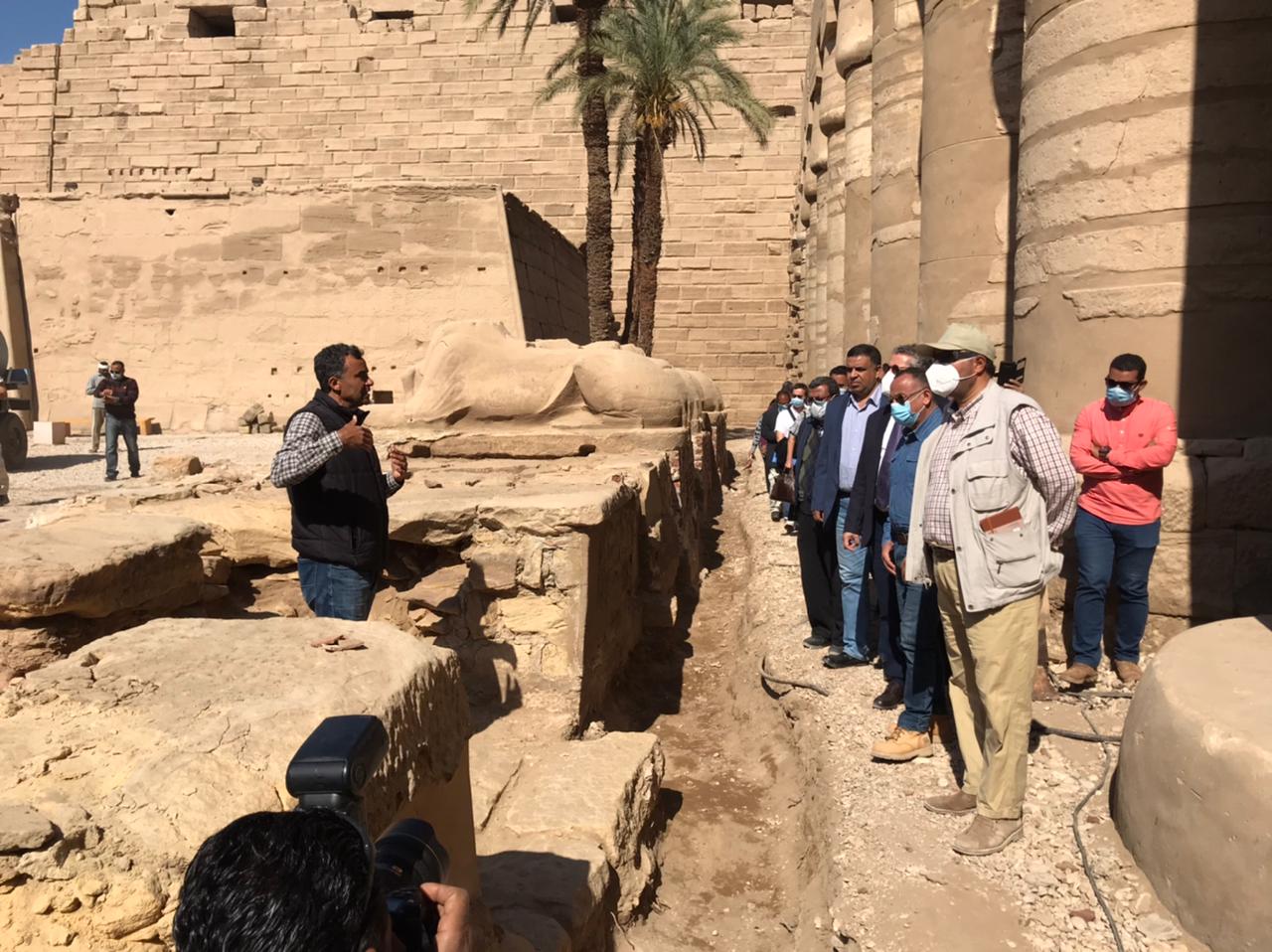CAIRO – 7 March 2021: The Supreme Committee of the Egyptian French Center for the Study of the Temples of Karnak in Luxor has concluded its meetings to examine the works that have been accomplished during the 2020/2021 season at the temples, and to discuss the business plan scheduled for the next season.
The committee has inspected the work that has been accomplished during the last excavation season at the Temples of Karnak, including in the boat cabin, and Middle Kingdom excavation region, and reviewed the restoration of the statue of Amenemhat I, Thutmose III stores, painting of King Seti I in the Eighth Pylon and the statue of Ramses II in the Ninth Pylon.

Secretary-General of the Supreme Council of Antiquities Mustafa Waziri explained that the committee also reviewed the restoration of the statues of Amun and Amunet, located next to the shrine of the sacred boat. The resoration began in 2019.
The missing parts of the statue of Amun were restored, similar to the model of the statue of Amun in the Egyptian Museum in Tahrir, and the Middle Kingdom’s courtyard was developed in a way that exposes the oldest parts of the temple in it, highlighting the successive archaeological foundations and excavations in search for the oldest strata and earlier historical periods.

Within the framework of the project to develop services in the temple, a wooden walkway was constructed to define the path of the visit, which also helps protect the archaeological floor. The area has also been provided with indicative panels on the history of the region, in both Arabic and English.
For his part, Professor of Egyptian Antiquities at Ain Shams University and a member of the Egyptian-French Center for the Temples of Karnak Hassan Selim added that the restoration work of the statue of King Amenemhat I had also been completed and a sandstone floor was set to be used for displaying the statue.

Moreover, the southern warehouses of Brother Mnu Temple [El-Akh Mno] were also restored and the restoration work of the eastern wall in the courtyard of the cache was concluded. It was also agreed to create a bench to place some of the huge stone blocks located to the north of the Al-Asateen Great Hall.
Additionally, the process of studying the inscriptions contained on the columns and the inscriptions of King Taharqa from the 25th Dynasty was inspected and numerous scientific papers were published.
Furthermore, Waziri pointed out that it was agreed to reopen the temple of Brother Mnu for visits and to make a suitable wooden staircase to go up to the Osiri shrines of the temple, in addition to the need to work on completing the King Seti I painting in front of the Eighth Pylon, where this painting has a third part located in the city of Shutb in Asyut, and the approval of the Permanent Committee of Antiquities was obtained for the return of this part to be restored with the painting itself.
That is in addition to preparing the area and keeping pace with the development of the southern axis of Karnak in preparation for linking the visit with the Rams Road that extends to the Mut Temple and then the Luxor Temple.
The work of studying, documenting and photographing the statue blocks began.
Comments
Leave a Comment